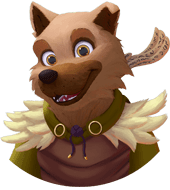Engaging battle encounters can be the focus of a memorable Dungeons & Dragons session, or a complete boring disaster. Trust me, a damage sponge giant will not attract much interest from the players. While combat is a fundamental aspect, the true magic lies in transforming these encounters into dynamic and unforgettable experiences for your players. In this blog post, we’ll delve into strategies and creative approaches to elevate your battle encounters to new heights.
Every Dungeon Master strives to create moments that linger in the minds of their players, and well-crafted battle encounters offer a prime opportunity for such memorable experiences. Let’s explore ways to go beyond mere combat and infuse your battles with excitement, strategy, and narrative depth.
Set the Scene:
Fighting in a forest is completely different than fighting in a tiny room. Your players must understand exactly where they are, and what they can use from their environment.
- Visual Descriptions: Paint a vivid picture of the battlefield. Describe the environment, lighting, and any interactive elements to immerse your players in the scene.
- Terrain Matters: Introduce dynamic terrain features that can impact the flow of battle. A steep waterfall, crumbling stone walls, or moving platforms add layers of strategy.
Note: Sometimes finding the correct battlemap for your encounter can be challenging. To overcome this issue, you can commission a professional artist to create a custom map just for you and your needs.
Compelling Enemies:
An enemy goblin is fun, sure. You know what is even better? A fire-breathing monocycle-riding goblin.
- Unique Abilities: Customize your enemies with distinctive abilities or tactics. Surprise your players with foes that challenge their expectations and force them to adapt.
- Backstories: Infuse your adversaries with backstory or motivations. This adds depth, making the encounter more than a simple skirmish.
Dynamic Objectives:
Most multiplayer games already contain multiple game scenarios. Capture the flag, King of the hill, to name a few. Why can’t your encounter incorporate some of those elements?
- Varied Goals: Expand beyond “defeat all enemies” scenarios. They tend to become boring very fast. Introduce objectives like rescuing hostages, protecting a valuable artifact, or escaping within a time limit.
- Consequences: Attach consequences to success or failure. This creates a sense of urgency and importance for the outcome.
Surprises and Twists:
This is especially helpful if the battle is about to end too soon, or it takes too long. DM’s best friend.
- Reinforcements: Introduce unexpected twists, such as reinforcements arriving mid-battle. This keeps players on their toes and adds an element of unpredictability. Reinforcements can either be allied or opposed to the players.
- Environmental Changes: Have the battlefield dynamically change during the encounter. A sudden storm, a strong wind, or a cloudy day can alter the dynamics.
Roleplay Within Combat:
Battle encounters shouldn’t always be about killing the other creature. It would be unrealistic to think that negotiations wouldn’t take place in a real fight.
- Enemy Banter: Allow enemies to taunt, negotiate, or even try to recruit the players mid-battle. This injects personality into the encounter.
- PC Reactions: Encourage players to roleplay their characters’ reactions during combat. This adds a layer of immersion and investment.
By infusing creativity, strategy, and narrative depth into your battle encounters, you can turn them into pivotal moments that players will remember long after the dice have been rolled. Experiment with these techniques, tailor them to your campaign, and watch as your battles evolve into epic tales of heroism and challenge. May your battles be engaging, and your campaigns unforgettable!
